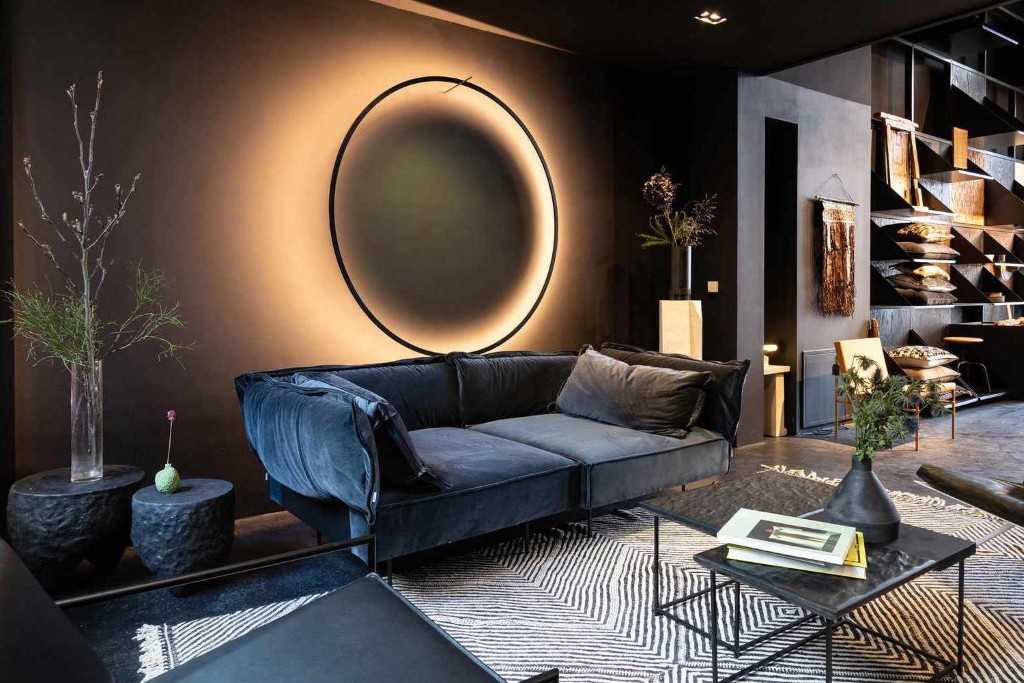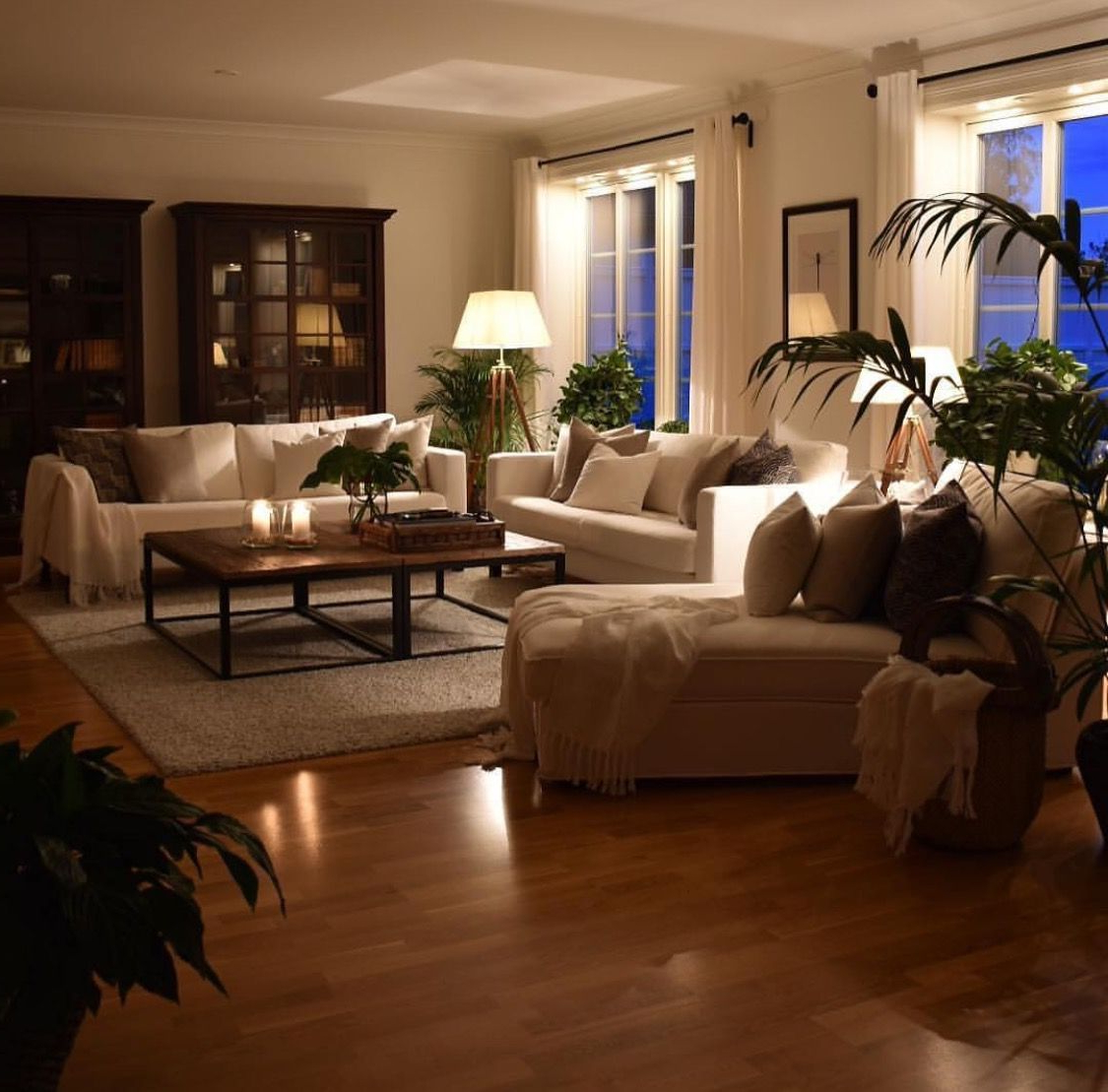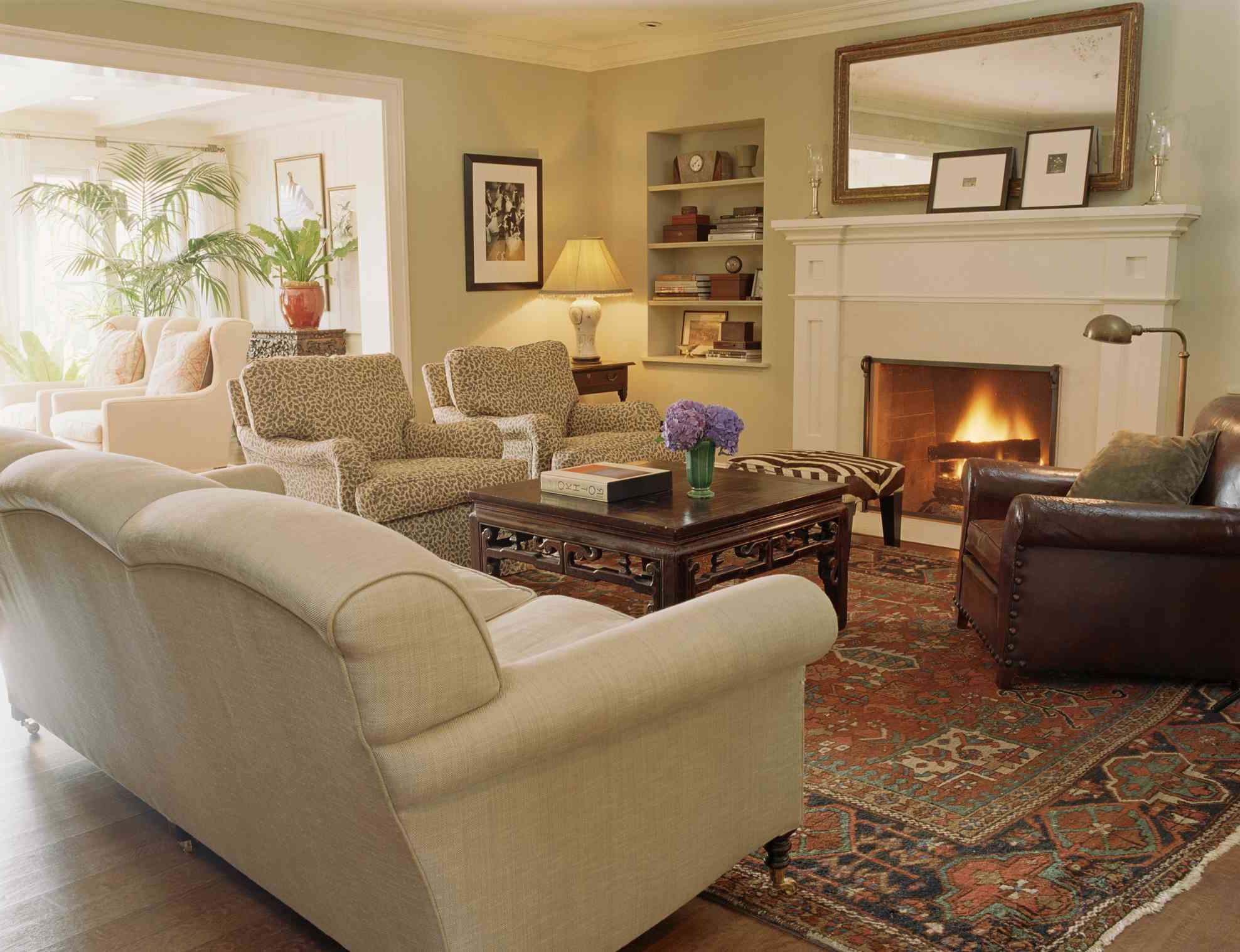There’s something deeply satisfying about walking into a living room that feels just right. Not too bright, not too dim, but perfectly balanced to make you want to stay. It’s not just about the furniture or the colors on the walls – it’s about how light dances through the room. The right lighting can turn a cold, sterile space into a warm haven where family and friends gather. Think about your favorite cozy spots – they usually have layers of light that create different moods and feelings. Lighting isn’t just about seeing what you’re doing anymore. It’s about feeling comfortable, relaxed, and genuinely at home.
Let’s face it – we spend a lot of time in our living rooms. Whether we’re watching TV, reading a book, having conversations, or just relaxing, this space needs to feel right. And one of the most powerful ways to shape that feeling is through lighting. It’s not just about switching lights on and off. It’s about creating layers, choosing the right types of bulbs, and understanding how light affects our moods. You’ve probably walked into a room and instantly felt different – maybe even a bit uncomfortable or unwelcoming. That’s because lighting sets the tone before anything else. It tells us whether this space is meant for activity or rest, for work or play. The best part? You don’t need expensive equipment or professional help to create that magical atmosphere. With some simple knowledge and thoughtful choices, anyone can master the art of warm, inviting lighting.
Understanding Light Temperature and Its Emotional Impact
Light temperature is measured in Kelvin (K), and it plays a huge role in how a room feels. Think of it like this: cool white light (around 4000K) is like daylight – crisp and energizing. It’s great for workspaces and kitchens, but can make a living room feel clinical. Warm white light (2700K to 3000K) is more like candlelight or sunset – soft and comforting. This is what you want for your living room. When you’re surrounded by warm tones, your body naturally relaxes. Your brain releases melatonin, which helps you unwind. A good rule of thumb is to aim for bulbs between 2700K and 3000K for your main living room lighting. This range creates that golden glow that makes everything feel cozy. Try experimenting with different temperatures in various areas of your room. Maybe you want brighter, cooler light near your coffee table for reading, but warmer light near the sofa for evening relaxation. The subtle differences can completely change how the space feels.
Layered Lighting: The Foundation of Great Room Ambiance
The secret to amazing living room lighting lies in layers. Just like wearing multiple pieces of clothing to stay comfortable in different weather, you need multiple sources of light to create a truly inviting space. Start with the basics: overhead lighting for general illumination. Then add task lighting – things like table lamps or floor lamps for specific activities. Finally, create accent lighting to highlight features like artwork or architectural details. Picture this: you’re sitting on your couch, reading a book. You want enough light to see clearly, but not so much that it hurts your eyes. That’s where layered lighting shines. It gives you flexibility to adjust the mood throughout the day. For example, you might use bright overhead lights during the day for tasks like cleaning or cooking. But when evening comes, you dim those lights and bring out your table lamps and candles. The result? A space that adapts to your needs while maintaining its warmth.
Choosing the Right Bulbs for Maximum Comfort
Not all bulbs are created equal, especially when it comes to comfort and ambiance. Incandescent bulbs were once the gold standard, producing that warm, yellowish light we associate with comfort. However, they’re being phased out due to energy efficiency concerns. LED bulbs now offer the same warm glow while using far less energy. Look for LEDs labeled as “warm white” or “soft white.” These typically fall in the 2700K to 3000K range. Another important factor is lumens – this measures brightness. A 60-watt equivalent LED bulb produces around 800 lumens. For a living room, you’ll want somewhere between 1000 and 2000 lumens total. Don’t forget about dimming capabilities. If you can adjust the brightness, you get even more control over your environment. Many modern LED bulbs are dimmable, allowing you to fine-tune the atmosphere. Consider investing in dimmer switches for your main lights and key lamp fixtures. This way, you can easily shift from bright and functional to soft and relaxing with the flick of a switch.
Strategic Placement of Lamps and Fixtures
Where you place your lights matters just as much as what kind of lights you choose. Position your main light source high enough to avoid shadows but low enough to provide adequate illumination. For table lamps, aim them at eye level when seated. This prevents harsh glare and creates a pleasant reading experience. Floor lamps should be placed near seating areas, ideally at the edge of your sofa or armchair. They serve as both functional light and decorative elements. Consider the shape of your room and how light flows within it. In a rectangular space, placing lights at opposite ends creates a more even distribution. For irregular shapes, think about how light will travel across the space. Avoid putting lights directly above seating areas – this creates unflattering shadows and can make people look tired. Instead, angle your lights slightly downward toward the center of the room. This distributes light evenly and creates a more flattering appearance for everyone.
Using Natural Light to Enhance Your Indoor Atmosphere
Don’t underestimate the power of natural light in your living room. Sunlight is free, abundant, and has incredible benefits for both physical and mental health. During the day, let in as much natural light as possible. Keep window treatments light and airy – sheer curtains or blinds allow sunlight to enter while still providing privacy. As the sun moves throughout the day, watch how it changes the room’s character. Morning light tends to be crisp and blue-toned, while afternoon light becomes warmer and more golden. This natural progression can help you feel more connected to the time of day. Evenings are perfect for combining natural light with artificial lighting. When the sun goes down, your carefully planned artificial lighting should complement rather than compete with the remaining daylight. You might find that certain times of day feel more special – perhaps when the late afternoon sun streams through a window onto your favorite chair. Capture those moments by adjusting your lighting accordingly.
Adding Accent and Decorative Lighting Elements
Sometimes the magic happens in the small details. Accent lighting brings personality and depth to your living room. String lights can create a whimsical, romantic feel – perfect for parties or quiet evenings. Fairy lights draped across a bookshelf or wrapped around a mirror add visual interest and soft glow. Candlelight, whether real or simulated, is incredibly soothing. Candles have been used for centuries to create intimate atmospheres. Today, you can find LED candles that look realistic and are safer than traditional options. They’re perfect for adding a touch of elegance to any corner. Picture frames, artwork, or architectural features can benefit from focused lighting. Track lighting or adjustable spotlights can highlight these elements beautifully. The key is to use accent lighting sparingly and purposefully. Too many bright lights can overwhelm the senses and take away from the overall warmth you’re trying to create. Choose a few strategic spots and let them shine. Remember, the goal is to enhance rather than overpower.
Practical Tips for Creating Different Moods Throughout the Day
One of the most beautiful aspects of good lighting is its ability to change the entire mood of a room. Morning light can energize and refresh, while evening light can soothe and relax. Start by setting up your lighting system to support different activities. In the morning, use brighter, cooler light to wake up your space and your mind. This might mean turning on overhead lights or using daylight bulbs if you have them. During the day, you might want to keep things bright enough for working or entertaining guests. But as evening approaches, gradually shift to warmer, softer light. Dim the main lights and bring out your table lamps and candles. Consider installing smart lighting systems that can automatically adjust based on the time of day. These systems can mimic natural light patterns, helping regulate your circadian rhythm and improve sleep quality. You might also want to create designated areas for different activities. Perhaps a reading nook with a dedicated lamp, or a conversation area with ambient lighting that encourages gathering.
Avoiding Common Lighting Mistakes in Living Rooms
Even experienced homeowners can fall into lighting traps that ruin the atmosphere they’re trying to create. One major mistake is relying solely on overhead lighting. While useful for general illumination, it often creates harsh shadows and can make a room feel cold and clinical. Another common error is using too many bright, cool-toned bulbs. This combination can make everything feel stark and unfriendly. Also, don’t forget about the placement of your lights. Lights positioned too high or too low can create uneven illumination and uncomfortable glare. Poorly chosen lampshades can also throw off the whole vibe. Harsh, reflective materials might create unwanted glare, while overly dark shades can block too much light. Another mistake is ignoring the relationship between lighting and furniture. Lights should complement your seating arrangements, not interfere with them. Finally, many people overlook the importance of dimming options. Without the ability to adjust brightness, your room lacks flexibility and cannot adapt to different needs throughout the day.
The Psychology Behind Lighting Choices
Lighting isn’t just about practicality – it’s deeply psychological. Our brains respond to different light qualities in specific ways. Warm light activates the parasympathetic nervous system, promoting relaxation and calmness. Cool light, on the other hand, stimulates alertness and focus. This is why you might feel more awake under bright office lights but more relaxed in a softly lit living room. Understanding these responses helps you design spaces that support your desired activities. For instance, if you want to encourage conversation and intimacy, opt for warm, indirect lighting. If you’re planning to work or study in the space, brighter, more direct light works better. The color of light also affects mood. Red and orange tones tend to be stimulating, while blues and greens are calming. These psychological effects aren’t just theoretical – they’re measurable and significant. By thoughtfully selecting your lighting, you’re essentially designing your emotional experience of the space.
Maintaining and Updating Your Lighting Setup Over Time
Lighting is an investment that deserves care and attention over time. Regular maintenance keeps your lights looking their best and performing efficiently. Clean your fixtures regularly to prevent dust buildup that can dull light output. Replace bulbs as needed, keeping track of their lifespan to avoid sudden failures. As technology evolves, consider upgrading to newer, more efficient bulbs or fixtures. LED technology continues improving, offering better color rendering and more options for customizing light quality. Don’t be afraid to update your setup periodically. Trends change, and your needs might evolve. What worked well five years ago might not serve you now. Maybe you’ve added new furniture or changed how you use the space. Adjusting your lighting accordingly ensures it continues to support your lifestyle. Consider seasonal changes too. During winter months, you might want to increase the warmth of your lighting to counteract shorter days and less natural light. This ongoing attention to your lighting setup helps maintain that cozy, welcoming atmosphere you’ve worked so hard to create.
Creating a warm and inviting living room atmosphere through lighting is both an art and a science. It requires understanding the psychology behind light, choosing the right tools, and applying them thoughtfully. The beauty of this process is that it’s entirely customizable to your personal style and lifestyle. Whether you prefer the simplicity of a single warm bulb or the complexity of a multi-layered lighting system, the key is intentionality. Every light fixture, every bulb choice, and every adjustment you make contributes to the overall feeling of your space. Remember, there’s no one-size-fits-all approach to lighting. What matters most is how the light makes you feel when you’re in the room. So go ahead and experiment. Try different combinations of warm and cool light. Play with the placement of your lamps. Notice how the changing light throughout the day affects your mood. The goal is to create a living space that supports your well-being and enhances your daily experiences. After all, the best lighting is the kind that makes you want to stay and enjoy the moment.















